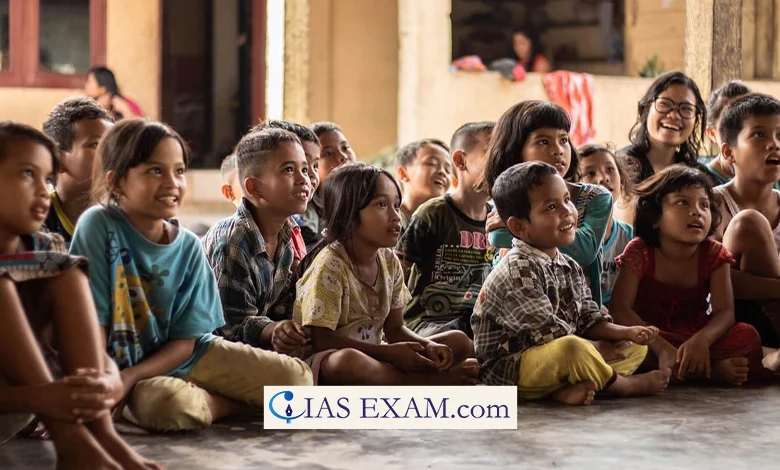Daily Current Affairs for UPSC
Australian Parliamentary Report on Child Labour in India
Syllabus - Governance [GS Paper-2]

Context
An Australian parliamentary committee has recently raised concerns over child labour in India referring to Australia-India Economic Cooperation and Trade Agreement.
Key Highlights
- The file has mentioned that Australia’s trade agreement with India does not realize v.
- India has a well-documented presence of child and (forced) labor, making significant contributions to the population of the world in modern slavery.
What is Child Labour?
- The International Labour group (ILO), defines child labour as work that deprives children in their early life, their potential and their dignity, and this is harmful to physical and mental development.
Child Labour in India
- India is home to about 1.01 crore working children between the age of 5 and 14 years, as per 2011 census.
- As per an Indian parliamentary status committee report, Bihar, Uttar Pradesh, Rajasthan, Madhya Pradesh and Maharashtra, employ over half of India’s child labour.
- While the prevalence of child labour declined between 2001 and 2011, it’s greater seen in rural regions because of migration.
Causes of Child Labour in India
- Many households in India live beneath the poverty line, and youngsters often need to work to complement their family interests.
- In a few cases, households grow to be trapped in debt bondage, wherein they’re forced to send their children to work to pay off loans. This perpetuates a cycle of exploitation and poverty.
- Conflict conditions and mass migrations, whether because of internal strife, herbal failures, or economic instability, disrupt families and expose youngsters to the cruel realities of exertions.
- The call for for cheap labour in numerous industries, which includes agriculture, manufacturing, and house work, perpetuates child labour.
Constitutional Provisions in opposition to Child Labour
- Article 23 prohibits site visitors in people, begar (compelled hard work) and different similar sorts of pressured hard work.
- Article 24 prohibits the employment of kids below the age of 14 years in any factory, mine or other hazardous activities.
- Article 21-A offers loose and compulsory education for all children in the age group of 6 to 14 years.
Steps taken by the Government
- Child Labour Act (Prohibition and Regulation) 1986: It prohibits children beneath the age of 14 years to be operating in dangerous industries and processes.
- National Child Labour Project (NCLP) Scheme: Under the scheme children inside the age institution of 9-14 years are rescued from work and furnished with training, vocational education, mid-day meal, stipend, fitness care, and many others.
- PENCIL (Platform for Effective Enforcement of No Child Labour) Portal: It is an electronic platform that aims at involving Centre, State, District, Governments, civil society and the general public in achieving the goal of child labour loose society.
- ILO conventions on child labour: In 2017 India ratified ILO Conventions No. 138 on Minimum Age to Employment and No. 182 on the Worst Forms of Child Labour.
International Measures
- The United Nations made 2021 the International Year for the Elimination of Child Labour, calling for urgent movement needed to meet a goal of ending the exercise by 2025.
- Target 8.7 of the Sustainable Development Goals (SDGs): Take immediately and powerful measures to eliminate forced labour, quit modern-day slavery and human trafficking and stable the prohibition and removal of the worst styles of child labour.
- ALLIANCE 8.7, an inclusive worldwide partnership is dedicated to attaining Target 8.7 of SDGs.
Way Ahead
- Critics argue that Immediate imposition of worldwide hard work requirements could lead to reduction in the total economic welfare worldwide in developing nations as well as developed nations.
- However trade should no longer be a ‘race to the lowest on employees’ rights’ and inclusion of enforceable hard work rights is crucial in setting a level playing subject to make sure that corporations cannot just find themselves in jurisdictions with lower wages and conditions.
Source: The Indian Express
UPSC Mains Practice Question
Q.Examine the main provisions of the National Child Policy and throw light on the status of its implementation. (2016)





.png)



